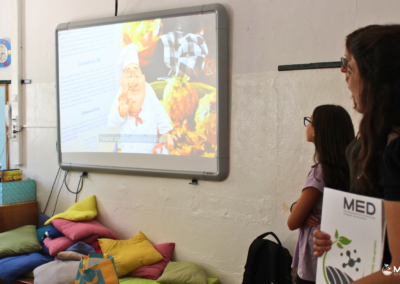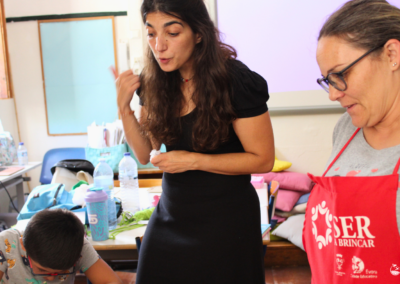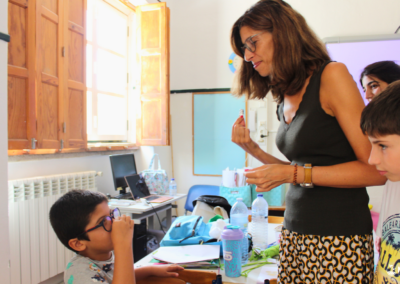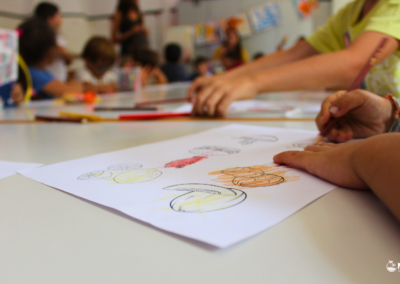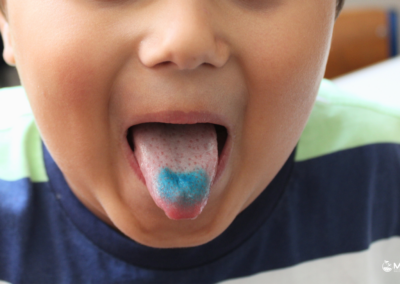MED Researchers Offered Science Activities to Children in Évora’s ‘Ser a Brincar’ Summer Programme
Challenged by the Évora Municipal Council (CME), researchers from the MED at the University of Évora replied to the call to offer scientific activities as part of the “Ser a Brincar” programme, promoted by the CME.
Between July and August, this programme promoted educational and cultural activities so that pre-school children had the opportunity to play and learn, socialise and discover, understand and communicate, experience arts and knowledge and get to know new places and people.
MED researchers offered 6 activities. ‘DNA in plain sight’ and “The world beyond our eyes” were the activities provided by the team from the Molecular Biology Laboratory at MED-UÉvora, coordinated by Hélia Cardoso, in which they were able to discover what a cell is, DNA and microorganisms such as bacteria. The little scientists were fascinated by extracting DNA from bananas and observing the growth of bacteria in Petri dishes.


The ‘Secrets underground’ were unveiled by Celeste Santos e Silva, head of MED-UÉvora’s Macromycology Laboratory. The children heard about ‘plant-friendly mushrooms’, a simple way to deconstruct the scientific buzzword ‘mycorrhisation’ – the symbiotic process between fungi and plant roots. Ultimately, they made their representation of the cork oaks that have teamed up with fungi to grow healthy.




With researcher Antonieta Alvarado, a veterinary surgeon, they learned how their pets are (in and inside out). It was an activity that the little ones really enjoyed!


With Inês Roque from the Ornithology Laboratory, they discovered how the barn owl feeds. They were surprised by the hunting skills of these birds and even more so to learn that they feed on mice and that biologists can identify them through their bones.



Finally, with the team from the Oral Biology and Proteomics Laboratory, coordinated by Elsa Lamy, they played with food and the senses. Between games and experiments, they talked about the 5 senses and how important they are when it comes to eating. The children guessed food flavours, discovered why they don’t feel food in the same way when they have a cold and painted their tongues with food colouring to easily identify their taste buds.
